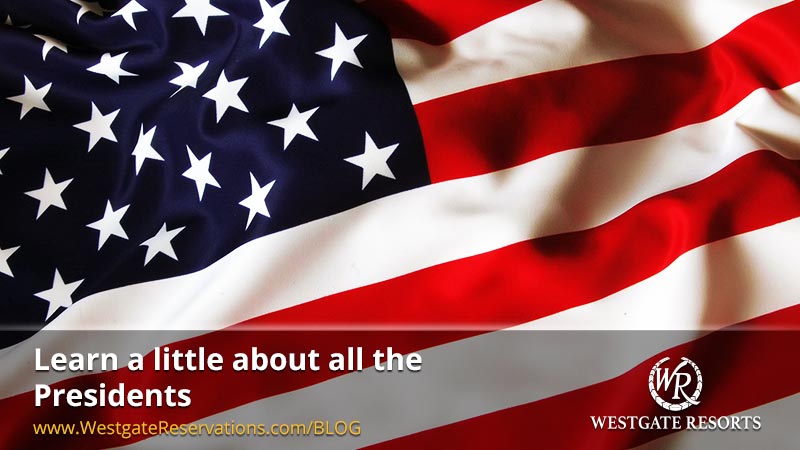How Will You Celebrate Presidents Day?
President's Day is Monday, February 15, 2016. Throughout history, a grand total of 43 men have held the highest office as the President of the United States. The first of those – George Washington – ultimately had a holiday named after him. Way back in 1885, Washington’s birthday of February 22 was established as a national holiday. However, in 1971, that holiday was moved to be celebrated annually on the third Monday of February as part of the Uniform Monday Holiday Act - an act designed to create more 3-day weekends.
Initially viewed as a celebration honoring the births of George Washington and Abraham Lincoln, President’s Day is now considered an opportunity to celebrate all of the U.S. presidents. From Washington, D.C. to Mount Rushmore in South Dakota, there are dozens of monuments, memorials and buildings you can visit to learn more about our Presidents. This President's Day weekend, why not learn a little more about the men who have led our country through good times and bad. Here's a list of historical sites you can visit - one for each President!
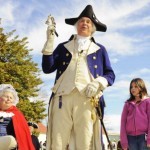
1. George Washington, 1789-1797
Mount Vernon – Mount Vernon, VA - Experience 18th century plantation life by visiting this amazing estate featuring gardens, grounds, as well as Washington’s famed 21-room mansion and museum overlooking the Potomac River.
2. John Adams, 1797-1801
Adams National Historic Park – Quincy, MA - Explore this 13-acre park that includes the birthplaces of TWO presidents, the “summer White House,” Stone Library, Adams Carriage House and historic landscape.
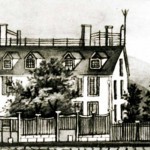
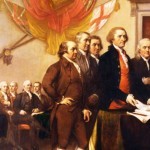
3. Thomas Jefferson, 1801-1809
Monticello – Charlottesville, VA - Visit this architectural masterpiece, from the historic botanic garden to the iconic home that was built and rebuilt over the course of 40 years. Monticello was home to the Jefferson family as well as workers – black and white, enslaved and free.
4. James Madison, 1809-1817
Montpelier – Montpelier Station, VA - Home to James and Dolley Madison, Montpelier features the couple’s mansion, a Presidential Library, 2,650 acres of rolling hills and horse pastures overlooking the Blue Ridge Mountains and the Madison Family Cemetery.
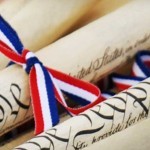
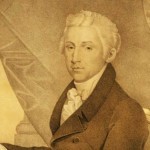
5. James Monroe, 1817-1825
Oak Hill – Oak Hill, VA - On land inherited from his uncle, Monroe lived in a wood frame clapboard building known today as the Monroe Cottage, prior to building the mansion at Oak Hill during his first term as president.
DID YOU KNOW?
James Monroe died on JULY 4, 1831
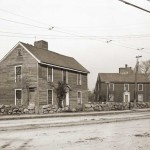
6. John Quincy Adams, 1825-1829
Adams National Historic Park – Quincy, MA - Son of the 2nd U.S President, John Q. Adams was born on the same historic land as his father. Four generations of Adams lived in the Old House at Peace Field including two first ladies, three ambassadors to Great Britain and a Pulitzer Prize winner.
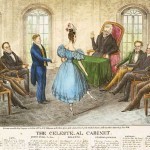
7. Andrew Jackson, 1829-1837
The Hermitage – Nashville, TN - This plantation mansion sites on 425 acres of land Jackson named the Hermitage. The entrance hall features a winding staircase and original wallpaper from 1837. The Hermitage also includes a museum and a garden the hosts the tomb of Jackson and his wife.
DID YOU KNOW?
Andrew Jackson lost both parents and was orphaned at age 14. Another President, Herbert Hoover, was orphaned at age 8.
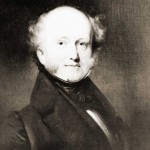
8. Martin Van Buren, 1837-1841
Martin Van Buren National Historic Site – Kinderhook, NY - Van Buren resided in his treasured Lindenwald estate and the surrounding 225 acres for 21 years, operating a successful farm while experimenting and cultivating new varieties of vegetables.
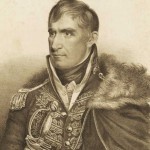
9. William Henry Harrison, 1841
William Henry Harrison Tomb – North Bend, OH - This monument and tomb includes 24 vaults containing the bodies of Harrison, his wife and other family members. The monument sits at the summit of Mt. Nebo and offers a beautiful panorama of the Ohio River Valley.
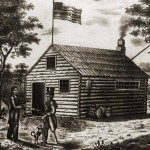
10. John Tyler, 1841-1845
Sherwood Forest Plantation – Charles City, VA - Known as the longest frame house in America, the Sherwood Forest Plantation has been the continuous residence of the Tyler family since the President purchased it from his cousin in 1842. Over 300-feet long, the home features a 68-foot ballroom, 25 acres of gardens, and original outbuildings.
DID YOU KNOW?
The grounds at John Tyler’s Sherwood Forest Plantation contain more than 80 varieties of trees.
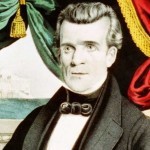
11. James Knox Polk, 1845-1849
President James K. Polk State Historic Site – Pineville, NC - Explore the historic log buildings that were the birthplace of Polk and 21 of the original 150 acres owned by his father, Samuel. The site includes a museum with artifacts.
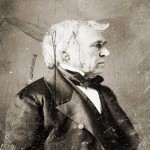 />
/>
12. Zachary Taylor, 1849-1850
Fort Zachary Taylor State Park – Key West, FL - This 54-acre park includes the landmark fortress which served as headquarters for the US Navy’s east Gulf Coast blockade squadron that deterred supply ships from reaching or leaving Confederate ports. Fort construction began in 1845 and was named after Taylor who died in office in 1850.
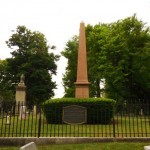
13. Millard Fillmore, 1850-1853
Buffalo City Hall Statues – Buffalo, NY - Buffalo’s landmark City Hall overlooking Lake Erie and the neighboring shores of Canada, features two presidential bronze statues sculpted in 1930 by Bryant Baker. On the south side of the building is a statue of Millard Fillmore and on the north side, Grover Cleveland.
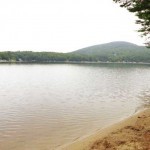
14. Franklin Pierce, 1853-1857
Franklin Pierce Homestead – Hillsborough, NH - This stately home was built by Benjamin Pierce in 1804, the year his son and the future President was born. The home includes a grand ballroom, hand-stenciled walls and imported wallpaper, plus gardens and an artificial pond.
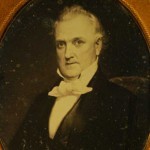
15. James Buchanan, 1857-1861
Wheatland - Lancaster, PA - In 1856, Wheatland served as Buchanan’s presidential campaign headquarters. A beautiful 10-acre setting features the historic grounds and gardens of Wheatland, an arboretum, and a museum.
DID YOU KNOW?
James Buchanan was the only President who never married.
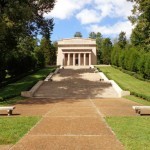
16. Abraham Lincoln, 1861-1865
The Henry Ford Museum – Dearborn, MI - You could visit the iconic Lincoln Memorial or even Ford’s Theater in Washington, D.C., but the silk, upholstered rocking chair the President was sitting in on April 14, 1865 when he was assassinated is now on display at this amazing museum that also hosts an original camp bed used by George Washington and the John F. Kennedy assassination limousine.
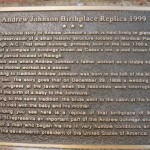
17. Andrew Johnson, 1865-1869
Andrew Johnson National Cemetery – Greeneville, TN - One of Johnson’s favorite spots for meditating, Monument Hill was used during the Civil War for signaling and was known as Signal Hill. You’ll also find a Visitor’s Center, museum and Johnson’s early home.
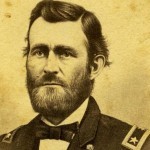
18. Ulysses S. Grant, 1869-1877
Grant’s Farm – St. Louis, MO - The 281-acre ancestral home of the Anheuser Busch Family, Grant’s Farm was named for Ulysses S. Grant who originally worked a portion of the land. Home to a 4-room, 2-story cabin built by Grant in 1855, the farm honors the 18th President while offering rides, shows and a refuge for more than 900 animals.
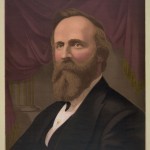
19. Rutherford Birchard Hayes, 1877-1881
Rutherford B. Hayes Presidential Library & Museum – Fremont, OH - The Rutherford B. Hayes Presidential Library & Museums is America’s first presidential library and celebrates its centennial in 2016.
DID YOU KNOW?
In 1860, 11-yr-old Grace Bedell wrote a letter to Lincoln suggesting that he grow a beard to make him “look a great deal better.” He later met and thanked her for the idea.
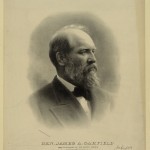
20. James Abram Garfield, 1881
National Gallery of Art West Building – Washington, D.C. - The gallery sits on the north side of the National Mall, the same location where the Baltimore & Potomac Railroad Station once stood from 1872-1907. The site is unmarked, but that rail station is where the 20th President was shot on the morning of July 2, 1881. He died from the assassin’s bullet on Sept. 19.
DID YOU KNOW?
James A Garfield was the last President to be born in a log cabin.
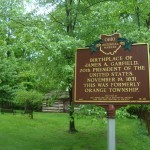
21. Chester Alan Arthur, 1881-1885
President Chester A. Arthur State Historic Site – Fairfield, VT - Questions remain whether or not Arthur was actually born in Canada, but meanwhile, this site includes a replica of the original home where he was said to be born, and a granite monument dedicated to his birthplace.
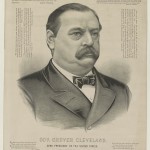
22. Grover Cleveland, 1885-1889
Grover Cleveland Golf Course – Amherst, NY - The Country Club of Buffalo, which hosted the 1912 U.S. Open championship, was purchased by the city in 1925 and renamed after the 22nd President who was also a former mayor of Buffalo.
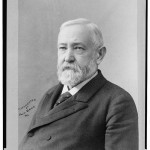
23. Benjamin Harrison, 1889-1893
Benjamin Harrison Home – Indianapolis, IN - Grandson of the 9th President and Great-Grandson of one of the signers of the Declaration of Independence, the front porch of his Indianapolis home was used to deliver speeches to visiting delegations that gathered on the shaded front lawn.
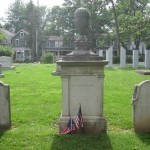
24. Grover Cleveland, 1893-1897
Grover Cleveland Gravesite – Princeton, NJ - The only President to serve two non-consecutive terms, Cleveland was the 22nd and 24th President of the U.S. Cleveland’s gravesite is in the Princeton Cemetery – the same cemetery where former Vice President Aaron Burr (best known for killing Alexander Hamilton in a duel) is buried.
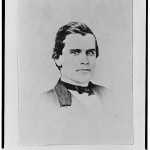
25. William McKinley, 1897-1901
McKinley Presidential Library & Museum - Canton, OH - Explore this hands-on, interactive science museum which also includes McKinley’s Presidential museum, a historical library, planetarium and the McKinley National Memorial. The memorial is on a site often visited by the 25th President who was assassinated six months into his second term.
DID YOU KNOW?
William McKinley was the fifth and final Civil War veteran to occupy the Presidency.
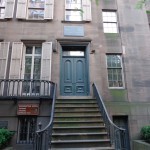
26. Theodore Roosevelt, 1901-1909
Inaugural Site – Buffalo, NY - One of the most popular and important President’s in U.S. history came into office not via election, but he ascended to the office after the assassination of McKinley. See the historic home where a short, unexpected, emotional and improvised ceremony was held to swear in the new President.
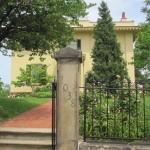
27. William Howard Taft, 1909-1913
William Taft National Historic Site – Cincinnati, OH - Both a President and a Chief Justice of the United States, Taft’s restored birth home includes exhibits and even an animatronic figure of his son, Charlie Taft – telling stories about different family members.
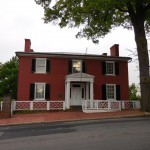
28. Woodrow Wilson, 1913-1921
Woodrow Wilson Presidential Library – Staunton, VA - Wilson’s birthplace home, a chateau-style mansion, houses the 28th President’s museum, featuring 7 galleries of historic photos, documents and objects.
DID YOU KNOW?
Woodrow Wilson was the first president to attend a Major League Baseball World Series game. Game 2 of the 1915 Series featured the Philadelphia Phillies against the Boston Red Sox who had a rookie pitcher named Babe Ruth.
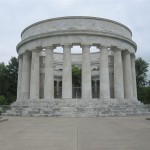
29. Warren Gamaliel Harding, 1921-1923
Harding Memorial – Marion, OH - The Harding Home offers a legacy museum, but the President’s tomb is even more majestic. The last large-scale monument for a deceased President is a circular marble structure with 46 columns that resembles a Greek temple. A surrounding garden honors his wish to be buried in a simple grave under a tree and under the stars.
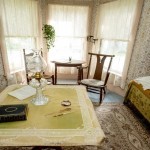
30. Calvin Coolidge, 1923-1929
Plymouth Notch – Plymouth Notch, VT - Unlike the typical birthplace home museum, Plymouth Notch is an entire village nearly unchanged since the early 20th century, and includes the preserved homes of Coolidge, his family and neighbors, a community church, one-room schoolhouse, a cheese factory and a general store.
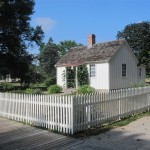
31. Herbert Clark Hoover, 1929-1933
Birthplace Cottage – West Branch, IA - Orphaned at age 9, Hoover left his small town where he was born in a tiny, two-room cottage and ascended all the way to the Presidency.
DID YOU KNOW?
Herbert Hoover’s birthplace was a tourist attraction way back in 1928. Before it became a national historic site, the home’s owner – Jennie Scellers – charged 10 cents for tours and established a souvenir stand on her lawn.
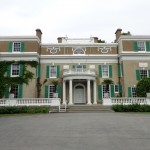
32. Franklin Delano Roosevelt, 1933-1945
Little White House - Warm Springs, GA - FDR built this house in 1932 and visited regularly to swim in the 88-degree spring waters, finding pain relief in his struggle with polio. He created the Warm Springs Foundation that eventually became the March of Dimes – a foundation that ultimately found the cure for polio.
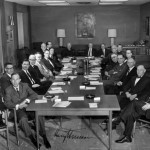
33. Harry S. Truman, 1945-1953
Harry S. Truman Library & Museum – Independence, MO - The Truman home and farm showcase the simple life that Truman enjoyed before, during and after his Presidency. Enjoy a variety of tours and activities.
DID YOU KNOW?
Harry S. Truman actually had no middle name…his parents gave him the middle initial S to honor and please his grandfathers, Anderson Shipp Truman and Solomon Young.
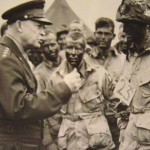
34. Dwight David Eisenhower, 1953-1961
Gettysburg National Military Park – Gettysburg, PA - Adjacent to the historic Gettysburg battlefield, you’ll find Eisenhower’s residence and 189-acre farm. Eisenhower first saw the area in 1915 while visiting with his West Point class and he later purchased the farm in 1950 – where he lived and eventually retired.
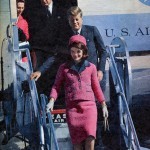
35. John Fitzgerald Kennedy, 1961-1963
Sixth Floor Museum at Dealey Plaza – Dallas, TX - Museum is located within the historic Texas School Book Depository where assassin Lee Harvey Oswald fired the fatal shot that killed the President on Nov. 22, 1963. Visit Dealey Plaza where you’ll find the famed grassy knoll and street lights and signs used in 1963.
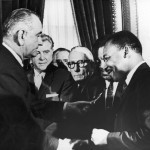
36. Lyndon Baines Johnson, 1963-1969
Lyndon B. Johnson Historical Park – Johnson City, TX - This national park tells the story of LBJ and his presidency, beginning with his ancestors until his final resting place on his special ranch – known as the Texas White House.
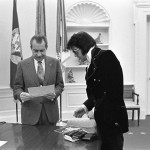
37. Richard Milhous Nixon, 1969-1974
Watergate Hotel – Washington, D.C. - The massive Watergate complex is a group of 5 buildings next to the John F. Kennedy Center for the Performing Arts, including the famous Watergate Hotel – offering a storied past while remaining a luxurious urban resort along the Potomac River.
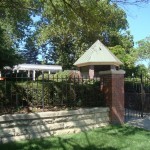
38. Gerald Rudolph Ford, 1974-1977
Michigan Stadium – Ann Arbor, MI - The Ford Presidential Library & Museum is closed for renovation until Spring 2016, so instead you could venture to the University of Michigan in Ann Arbor to see Michigan Stadium – the largest football stadium in the country - seating 107,601 – where Ford led the Wolverines to 2 undefeated seasons and national championships in 1932 and 1933.
DID YOU KNOW?
Gerald Ford is the only President to have served as a ranger in the National Park Service – working as a seasonal ranger at Yellowstone in the summer of 1936.
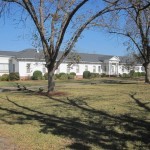
39. James Earl Carter, Jr., 1977-1981
Jimmy Carter National Historic Site – Plains, GA - Explore the rural southern culture of the area where Carter was raised and where he stayed connected throughout his presidency and beyond.

40. Ronald Wilson Reagan, 1981-1989
Ronald Reagan Square – Krakow, Poland - Dozens of streets, buildings and schools have been named after the 40th President – perhaps none greater than the Polish city of Krakow renaming its town square after Reagan in recognition of his role in ending communist rule within the country.
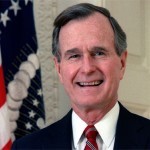
41. George Herbert Walker Bush, 1989-1993
Walker’s Point – Kennebunkport, ME - The Bush family’s summer home is located on a scenic point jutting out into the Atlantic in southern Maine near the town of Kennebunkport. A family retreat for more than a century, the estate features two mansions and a gated entrance guarded by the Secret Service.
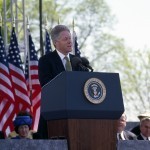
42. William Jefferson Clinton, 1993-2001
Clinton Birthplace – Hope, AR - Explore the home where Clinton spent the first four years of his life with his widowed mother and his grandparents. This historic site includes exhibits, tours and a bookstore.

43. George Walker Bush, 2001-2009
George W. Bush Presidential Library & Museum – Dallas, TX - Located on the beautiful campus of Southern Methodist University, the library and museum are home to 43,000 gifts given to the President and First Lady by people from around the world.
DID YOU KNOW?
When a President accepts a gift from a foreign Head of State, it becomes property of the American people, as Presidents work on our behalf. The President may choose to purchase some gifts at the end of their term, at the appraised value.

44. Barack Hussein Obama, 2009-2016
Waco Mammoth National Monument – Waco, TX - During his Presidential terms, Obama has used the Antiquities Act to establish or expand 19 National Monuments such as this mammoth fossil site, protecting millions of acres of public lands and waters for future generations to enjoy.




